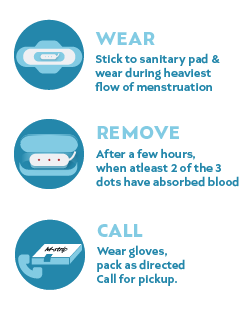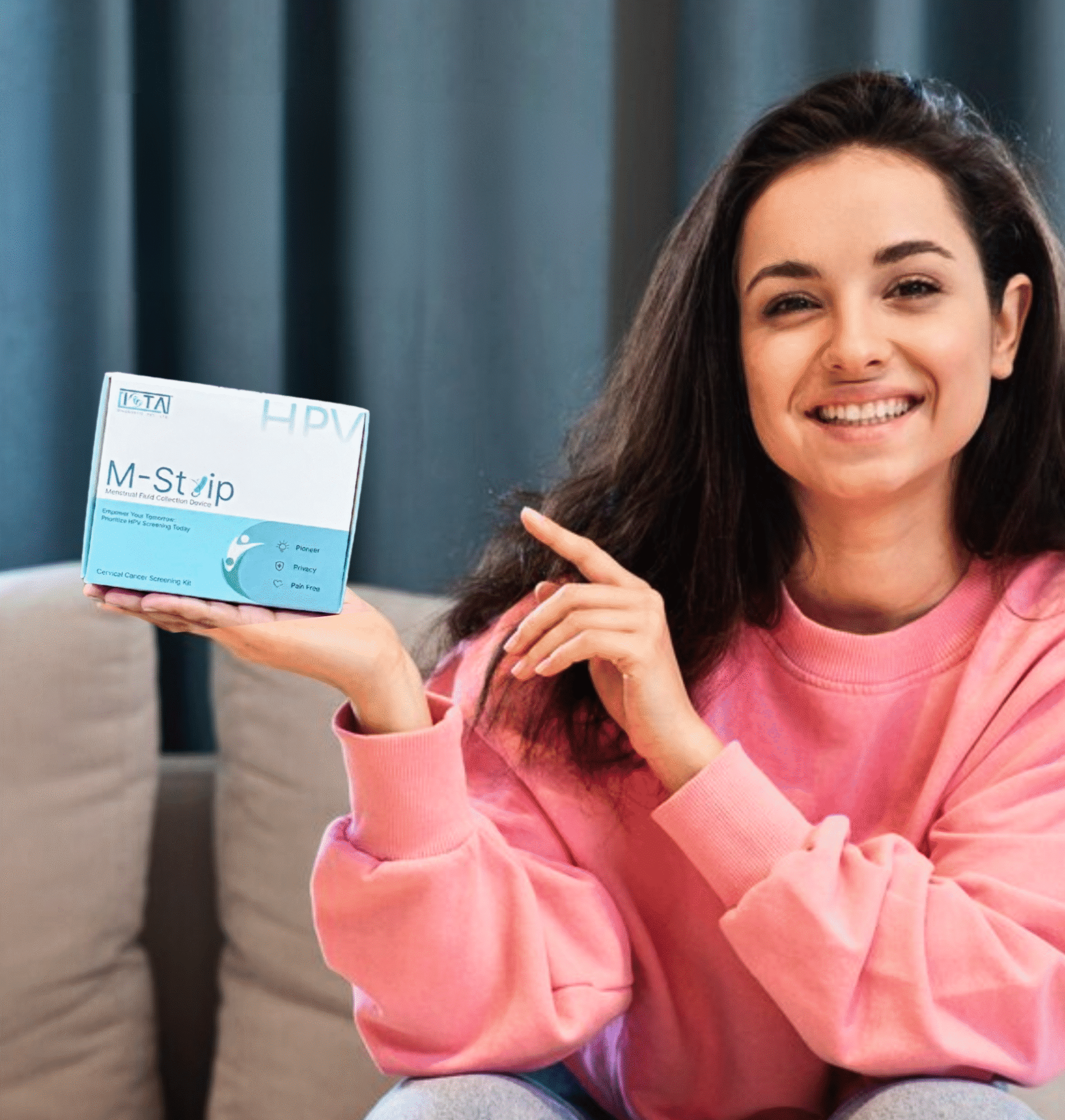


M-Strip
Private. Pain-Free. Passive screening
Detects high-risk HPV — the main cause of cervical cancer
Uses menstrual blood — no swab, no speculum
Fully at-home — stick-on strip, no clinic visit
Affordable — ₹1800 includes:
• Sample pickup
• Lab testing
• Detailed report
• Gynaecologist consult (if needed)
Suitable even if vaccinated — protects against strains that vaccines may miss
100% private, safe & painless
How to use:

Why Choose M-Strip?
Pain Free
Private
Revolutionary
Affordable
“Menstrual blood tests are now proven to match the reliability of traditional cervical smears. A revolution in women’s health screening!”
Features
Non-Invasive Sample Collection
Menstrual-based or swab sample—no pain, no clinic visit.
High Sensitivity & Accuracy
Detects high-risk HPV with greater sensitivity than Pap smears.
Home Sample Pickup
Doorstep collection for total convenience.
Doctor-Verified Reports
Doorstep collection for total convenience.
Gynaecologist Support
Positive cases get direct referral to specialists.
Affordable Inclusive Pricing
₹1800 covers kit, pickup, testing, report & consult—no hidden fees.

Common Questions
Open the kit and take out the M-Strip. Remove the adhesive backing from the strip and attach it to the center of a sanitary pad. Wear the pad during your menstrual period on day 1 or day 2, ideally during high flow, for 2 to 4 hours. Finally, carefully remove the M-Strip from the pad and place it directly into the provided container.
M-Strip can detect 14 high-risk types of HPV viruses (16, 18, 31, 33, 35, 39, 45, 51, 52, 56, 58, 59, 66 and 68), which are associated with an increased risk of developing cervical cancer. By detecting these virus types early, the M-Strip helps in assessing the potential risk and taking preventive measures.
It’s generally recommended to undergo cervical cancer screening every five years, according to WHO guidelines. If you have a history of HPV or other risk factors, talk to your healthcare provider for personalized advice.
Menstrual blood naturally contains exfoliated cervical and vaginal cells, along with HPV DNA if present. This makes it a non-invasive, self-collectable, and practical alternative for HPV screening, especially in low-access or community-based settings.
HPV vaccination protects against the most common high-risk types, but it doesn’t cover all strains or existing infections. According to WHO, screening every 5 years using HPV DNA ensures early detection of infections or pre-cancerous changes not prevented by the vaccine.
- Women aged 25–65 (Menstruating women)
- Vaccinated or unvaccinated
- Women who have missed routine Pap tests
- Prefer privacy or can’t visit a clinic

